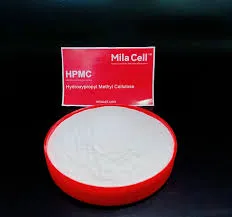
Nov . 30, 2024 11:08 Back to list
Understanding Full Form of HPMC and Its Applications in Various Fields
Understanding HPMC Its Full Form, Uses, and Significance
Hydroxypropyl Methylcellulose, commonly known as HPMC, is a semi-synthetic polymer derived from cellulose, a natural polymer obtained from the cell walls of plants. This compound possesses unique properties that make it valuable in various industries, including pharmaceuticals, food, construction, and cosmetics. In this article, we will explore the full form of HPMC, its applications, benefits, and reasons for its widespread use.
What is HPMC?
HPMC is the abbreviation for Hydroxypropyl Methylcellulose. The structure of HPMC consists of modified cellulose in which hydroxypropyl and methoxy groups are introduced into the cellulose chain. This modification enhances the solubility of the polymer in water, forming viscous solutions that can be used for multiple purposes. HPMC is categorized as a non-ionic cellulose ether, meaning it does not carry any charge, which makes it versatile for various formulations.
Applications of HPMC
1. Pharmaceutical Industry HPMC is extensively utilized in the pharmaceutical sector as a binder, thickener, and coating agent. It is a key ingredient in many controlled-release drug formulations, where it helps to regulate the release of active ingredients. Its gelling properties are also harnessed in the production of ophthalmic solutions, where it can improve the viscosity and stability of eye drops.
2. Food Industry In the food sector, HPMC is recognized as a food additive, often labeled as E464. It serves as a thickening agent, emulsifier, and stabilizer in various food products, including dressings, sauces, and baked goods. Its ability to retain moisture enhances the texture and shelf-life of products, making it a preferred choice for food manufacturers.
hpmc full form

3. Construction Industry HPMC plays a crucial role in construction, particularly in the formulation of adhesives, paints, and tile cements. It acts as a thickener and water-retention agent, ensuring a smooth application and enhancing the durability of the final product. Its properties help maintain workability and extend the open time, allowing builders to work with these materials more efficiently.
4. Cosmetics and Personal Care In cosmetics, HPMC is used for its thickening and stabilizing properties. It is an essential ingredient in various products, including lotions, creams, and hair gels. Its non-ionic nature makes it suitable for sensitive skin formulations, providing a smooth texture without causing irritation.
Benefits of HPMC
One of the significant advantages of HPMC is its versatility. The ability to modify its properties through varying the degree of substitution allows manufacturers to tailor HPMC to suit specific applications. Additionally, HPMC is non-toxic, biodegradable, and has a low environmental impact, making it a preferable choice for eco-conscious companies.
Furthermore, HPMC is easy to handle and mix, and it does not interact adversely with other ingredients in formulations. Its thermal stability and resistance to high temperatures make it suitable for various manufacturing processes, adding to its appeal across multiple industries.
Conclusion
HPMC, or Hydroxypropyl Methylcellulose, is a remarkable compound that bridges the gap between natural and synthetic materials. Its unique properties and broad range of applications make it indispensable in various sectors, including pharmaceuticals, food, construction, and cosmetics. As industries continue to evolve and innovate, the significance of HPMC is likely to increase, reinforcing its status as a vital ingredient in many formulations. Understanding HPMC and its applications provides insight into why it remains a popular choice for manufacturers aiming to balance quality, safety, and environmental responsibility. As research continues and new applications are discovered, HPMC is poised to remain at the forefront of material science and product development.
-
Versatile Hpmc Uses in Different Industries
NewsJun.19,2025
-
Redispersible Powder's Role in Enhancing Durability of Construction Products
NewsJun.19,2025
-
Hydroxyethyl Cellulose Applications Driving Green Industrial Processes
NewsJun.19,2025
-
Exploring Different Redispersible Polymer Powder
NewsJun.19,2025
-
Choosing the Right Mortar Bonding Agent
NewsJun.19,2025
-
Applications and Significance of China Hpmc in Modern Industries
NewsJun.19,2025







